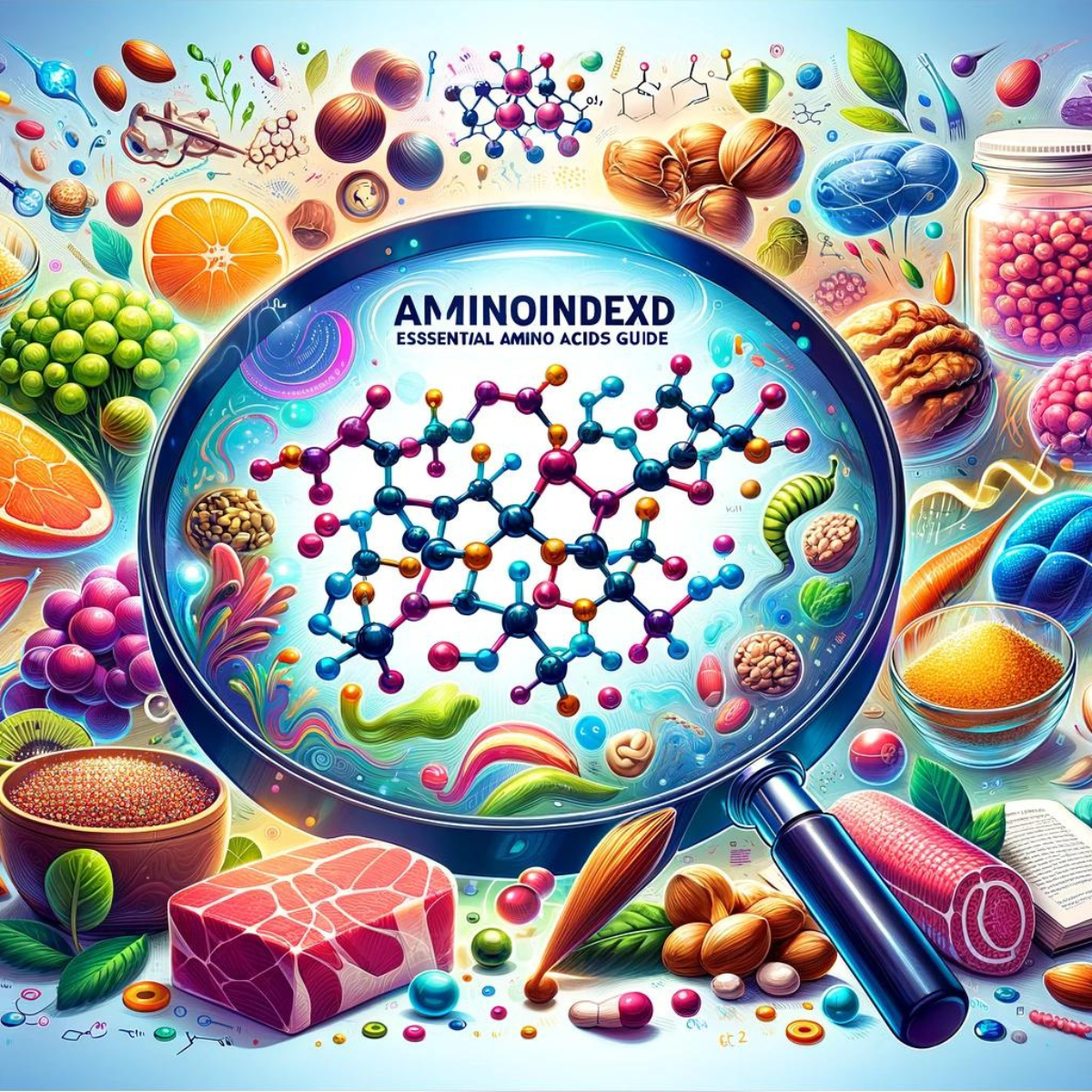
สารบัญ
- บทนำ: เล็บที่แข็งแรง พลังงานมหาศาล
- อาการเล็บทั่วไป: สิ่งที่ต้องระวัง
- สาเหตุของปัญหาเล็บ: ทำไมอาการเหล่านี้จึงเกิดขึ้น?
- การรักษาปัญหาเล็บอย่างได้ผล
- ป้องกันปัญหาเล็บ: ดูแลเล็บของคุณให้มีสุขภาพดีตลอดไป
- สรุป: เล็บที่แข็งแรงอยู่ไม่ไกลเกินเอื้อม
- คำถามที่พบบ่อย: คำถามที่พบบ่อย
- โพสต์ที่เกี่ยวข้อง
- การปฏิเสธความรับผิดชอบ
- อ้างอิง
บทนำ: เล็บที่แข็งแรง พลังงานมหาศาล
พูดตรงๆ ว่าไม่มีใครอยากเป็นดาราในหนังสยองขวัญที่มีนิ้วเท้าเป็นจุดเด่น อย่างไรก็ตาม หากเล็บของคุณเปลี่ยนสี หนาขึ้น หรือดูไม่สวยงาม คุณอาจรู้สึกเหมือนกำลังอยู่ในฝันร้ายนั้น การติดเชื้อราที่เล็บไม่ใช่แค่ปัญหาทางความงามเท่านั้น แต่ยังส่งผลต่อความมั่นใจและความสบายตัวของคุณได้อย่างมาก
ข่าวดีก็คือ นี่ไม่ใช่จุดจบของเล็บของคุณ ไม่ว่าเล็บของคุณจะเต็มไปด้วยเชื้อรา ได้รับบาดเจ็บ หรือเพียงแค่มีรอยหยาบกร้าน ก็ยังมีความหวังอยู่ คอยติดตามเรา และเราจะแนะนำคุณตลอดกระบวนการเปลี่ยนเล็บ "ที่ปกปิด" ให้เป็นเล็บ "ที่โชว์" ลุคพร้อมไปชายหาดใกล้เข้ามาแล้วกว่าที่คุณคิด
คุณพร้อมที่จะเริ่มต้นใหม่ให้กับเล็บของคุณ—และความมั่นใจของคุณ—หรือยัง มาเริ่มกันเลย!
อาการเล็บทั่วไป: สิ่งที่ต้องระวัง
เล็บของคุณมีความสามารถในการส่งสัญญาณเมื่อมีบางอย่างผิดปกติได้อย่างน่าประหลาดใจ ไม่ว่าจะเป็นการติดเชื้อรา โรคสะเก็ดเงิน หรือสิ่งแปลกปลอมอื่นๆ การใส่ใจสัญญาณเหล่านี้จะช่วยให้คุณประหยัดเวลา หลีกเลี่ยงความไม่สบาย และหลีกเลี่ยงความเสียหายในระยะยาว ต่อไปนี้คืออาการเล็บที่พบบ่อยที่สุดที่คุณควรเฝ้าระวัง:
การเปลี่ยนสี
- ลักษณะ: เล็บเปลี่ยนเป็นสีเหลือง ขาว น้ำตาล หรือเขียว
- สาเหตุที่พบบ่อย: การติดเชื้อรา โรคสะเก็ดเงิน หรือการบาดเจ็บ
เล็บหนาขึ้น
- คำอธิบาย: เล็บจะหนาผิดปกติ ทำให้ตัดได้ยาก
- สาเหตุทั่วไป: การติดเชื้อราหรือโรคสะเก็ดเงิน
เล็บเปราะหรือหักง่าย
- คำอธิบาย: เล็บที่แตก หัก หรือหักได้ง่าย
- สาเหตุทั่วไป: การติดเชื้อรา โรคสะเก็ดเงินที่เล็บ หรือการบาดเจ็บเรื้อรัง
จุดขาวหรือรอยด่าง
- ลักษณะ: มีจุดสีขาวคล้ายแป้งบนผิวเล็บ
- สาเหตุทั่วไป: การติดเชื้อราที่ผิวเผินหรือการบาดเจ็บเล็กน้อย
สันหรือหลุม
- รอยบุ๋ม: รอยบุ๋มเล็กๆ บนผิวเล็บ (อาการคลาสสิกของโรคสะเก็ดเงิน)
- สัน: ร่องแนวนอนหรือแนวตั้งที่เกิดจากอายุ การเจ็บป่วย หรือความเสียหาย
เล็บหลุด (Onycholysis)
- คำอธิบาย: เล็บยกออกจากส่วนฐานเล็บ ทำให้เกิดช่องว่างที่เห็นได้ชัด
- สาเหตุทั่วไป: การติดเชื้อรา โรคสะเก็ดเงิน หรือการบาดเจ็บ
อาการแดงและบวมรอบเล็บ
- คำอธิบาย: สัญญาณของเล็บขบหรือเล็บเท้า (การติดเชื้อแบคทีเรีย/เชื้อรา)
- อาการ ที่อาจรุนแรงขึ้น: อาการเจ็บและหนองในรายที่มีอาการรุนแรง
กลิ่นไม่พึงประสงค์
- ลักษณะ : มีกลิ่นเหม็นออกมาจากเล็บ
- สาเหตุทั่วไป: การติดเชื้อรา
รูปร่างเล็บโค้งหรือบิดเบี้ยว
- ลักษณะ : เล็บโค้งเข้าด้านใน (spooning) หรือโค้งออกด้านนอก (clubbing)
- ตัวบ่งชี้ที่อาจเกิดขึ้น: บาดแผล การติดเชื้อรา หรือปัญหาสุขภาพระบบอื่นๆ
ความเจ็บปวดหรือความอ่อนโยน
- ลักษณะ: แพร่หลายโดยมีเล็บขบหรือการติดเชื้อ
เหตุใดอาการเหล่านี้จึงสำคัญ
แม้ว่าปัญหาเล็บอาจดูไม่สำคัญในตอนแรก แต่การเพิกเฉยอาจนำไปสู่ปัญหาที่ร้ายแรงกว่า เช่น การติดเชื้อที่ลุกลาม ความรู้สึกไม่สบายเรื้อรัง หรือแม้แต่เล็บเสียหายถาวร การสังเกตอาการเหล่านี้แต่เนิ่นๆ และดำเนินการใดๆ ก็สามารถป้องกันปัญหาเหล่านี้ได้ ซึ่งแสดงให้เห็นถึงความรับผิดชอบและแนวทางเชิงรุกในการดูแลสุขภาพเล็บของคุณ
หากสัญญาณเหล่านี้ดูคุ้นเคย อย่ารอช้า เล็บที่แข็งแรงไม่ใช่ทางเลือก แต่เป็นสิ่งจำเป็นสำหรับความเป็นอยู่ที่ดีโดยรวมของคุณ!
สาเหตุของปัญหาเล็บ: ทำไมอาการเหล่านี้จึงเกิดขึ้น?
การทำความเข้าใจสาเหตุพื้นฐานของปัญหาเล็บถือเป็นสิ่งสำคัญสำหรับการรักษาและป้องกันอย่างมีประสิทธิภาพ ไม่ว่าจะเป็นการติดเชื้อรา โรคภูมิคุ้มกันทำลายตนเอง หรือการบาดเจ็บภายนอก สาเหตุแต่ละอย่างต้องใช้แนวทางที่ตรงจุด
การติดเชื้อรา (Onychomycosis)
- สิ่งที่เกิดขึ้น: เชื้อรา มักเป็นเชื้อราชนิดผิวหนัง บุกรุกเข้าไปในส่วนใต้เล็บ แผ่นเล็บ หรือผิวหนังโดยรอบ
-
สาเหตุ :
- สภาพแวดล้อมที่อบอุ่นและชื้น: รองเท้าที่เปียกเหงื่อ ห้องอาบน้ำส่วนกลาง และสระว่ายน้ำเป็นแหล่งเพาะพันธุ์
- สุขอนามัยที่ไม่ดี: การไม่ทำความสะอาดหรือเช็ดเท้าให้แห้งอย่างถูกวิธีทำให้เชื้อราสามารถแพร่พันธุ์ได้
- ระบบภูมิคุ้มกันอ่อนแอ: ภาวะต่างๆ เช่น เบาหวานหรือความชราทำให้มีแนวโน้มที่จะเกิดโรคมากขึ้น
- บาดแผล: การบาดเจ็บเล็บเล็กน้อย (เช่น นิ้วเท้ากระแทก รองเท้าคับ) ทำให้เกิดการติดเชื้อได้
- สัญญาณเตือนภัย: เล็บเหลือง หนาขึ้น และมีเศษสิ่งสกปรกสะสมใต้เล็บ
โรคสะเก็ดเงินที่เล็บ
- สิ่งที่เกิดขึ้น: โรคภูมิแพ้ตัวเองซึ่งระบบภูมิคุ้มกันจะโจมตีเซลล์ผิวหนังที่แข็งแรง รวมทั้งเล็บด้วย
-
สาเหตุ :
- พันธุกรรม: ประวัติครอบครัวเป็นโรคสะเก็ดเงินจะเพิ่มความเสี่ยง
- ปัจจัยกระตุ้น: ความเครียด การติดเชื้อ หรือการบาดเจ็บอาจทำให้เกิดอาการกำเริบได้
- สัญญาณอันตราย: การเกิดหลุม เล็บหนาขึ้น การเปลี่ยนสี และเล็บแยก (onycholysis)
เล็บขบ (onychocryptosis)
- สิ่งที่เกิดขึ้น: ขอบเล็บเติบโตเข้าไปในผิวหนังโดยรอบ ทำให้เกิดอาการปวด บวม และมีรอยแดง
-
สาเหตุ :
- การตัดเล็บที่ไม่เหมาะสม: การตัดเล็บสั้นเกินไปหรือมีลักษณะโค้ง
- รองเท้าคับ: รองเท้าที่บีบนิ้วเท้าจะทำให้เล็บเติบโตผิดปกติ
- การบาดเจ็บ: การบาดเจ็บอาจทำให้เล็บเติบโตไม่ปกติ
- ธงแดง: อาการเจ็บบวม และบางครั้งอาจเกิดการติดเชื้อเป็นหนอง
การติดเชื้อแบคทีเรีย (โรคพาร์โอนิเชีย)
- สิ่งที่เกิดขึ้น: แบคทีเรียจะติดเชื้อที่ผิวหนังรอบๆ เล็บ ทำให้เกิดการอักเสบ
-
สาเหตุ :
- การกัดหรือการแกะเล็บ ทำให้เกิดช่องเปิดเล็กๆ ให้แบคทีเรียเข้าไปได้
- บาดแผลหรือบาดเจ็บ: รอบๆ หนังกำพร้าหรือรอยพับของเล็บ
- ความชื้นที่คงที่: การล้างมือบ่อยๆ หรือสภาพแวดล้อมที่เปียกชื้นกระตุ้นให้แบคทีเรียเติบโต
- ธงแดง: ผิวหนังแดง บวม และเจ็บ บางครั้งมีหนองด้วย
การบาดเจ็บที่เล็บ
- สิ่งที่เกิดขึ้น: ความเสียหายทางกายภาพต่อฐานเล็บหรือแผ่นเล็บทำให้เกิดการเปลี่ยนแปลง เช่น การเปลี่ยนสี สันนูน หรือเล็บหลุดลอก
-
สาเหตุ :
- แรงกดซ้ำๆ: จากรองเท้ากีฬาหรือรองเท้าที่คับเกินไป
- อาการบาดเจ็บเฉียบพลัน: การทำของหนักหล่นหรือเตะนิ้วเท้า
- สัญญาณเตือน: รอยฟกช้ำ การแยกตัว หรือรูปลักษณ์ผิดรูป
การติดเชื้อรา (การติดเชื้อราที่เล็บ)
- สิ่งที่เกิดขึ้น: ยีสต์ Candida ส่งผลต่อเล็บและผิวหนังโดยรอบ ทำให้เกิดอาการบวมและเปลี่ยนสี
-
สาเหตุ :
- ความชื้นส่วนเกิน: การสัมผัสกับสภาพแวดล้อมที่มีความชื้นเป็นเวลานาน
- พฤติกรรมการตากแห้งที่ไม่ดี: หลังการล้างมือหรือเท้า
- ภูมิคุ้มกันอ่อนแอ: สภาวะหรือการใช้ยาปฏิชีวนะเป็นเวลานาน
- สัญญาณเตือน: อาการบวม ปวด และเล็บหนาขึ้นหรือเปลี่ยนสี
การดูแลเล็บและสุขอนามัยที่ไม่ดี
- สิ่งที่เกิดขึ้น: การละเลยการดูแลเล็บจะก่อให้เกิดสภาพแวดล้อมที่เหมาะสมสำหรับการติดเชื้อและความเสียหาย
-
สาเหตุ :
- เครื่องมือที่ไม่ถูกสุขอนามัย: การใช้อุปกรณ์ที่ไม่สะอาดในการตัดแต่งหรือทำเล็บ
- การละเลย: ไม่ทำความสะอาด ไม่บำรุง และปกป้องเล็บ
- สารเคมีที่รุนแรง: การใช้ยาทาเล็บเป็นเวลานานหรือการสัมผัสตัวทำละลาย
- สัญญาณเตือน: เล็บอ่อนแอ ลอก หรือเปลี่ยนสี
ภาวะสุขภาพพื้นฐาน
- คำอธิบาย: ปัญหาทางการแพทย์เฉพาะอาจส่งผลโดยตรงต่อสุขภาพเล็บ
-
ตัวอย่าง:
- โรคเบาหวาน : เพิ่มความเสี่ยงต่อการติดเชื้อ และทำให้การรักษาล่าช้า
- ปัญหาการไหลเวียนโลหิต: การไหลเวียนโลหิตไปที่เท้าไม่ดีส่งผลต่อการเจริญเติบโตและสุขภาพของเล็บ
- การขาดสารอาหาร: ธาตุเหล็ก สังกะสี หรือโปรตีนในระดับต่ำอาจทำให้เล็บเปราะหรือมีลักษณะเหมือนช้อนได้
- สัญญาณเตือน: การเปลี่ยนแปลงเล็บอย่างต่อเนื่องที่ไม่ดีขึ้นด้วยการดูแลขั้นพื้นฐาน
สรุปสาเหตุ
ปัญหาเล็บมักมีสาเหตุมาจากเชื้อราหรือโรคภูมิต้านทานตนเอง โดยการระบุสาเหตุเหล่านี้ ไม่ว่าจะเป็นความชื้น บาดแผล หรือปัญหาสุขภาพอื่นๆ คุณจะสามารถดำเนินขั้นตอนเฉพาะเพื่อฟื้นฟูเล็บให้กลับมาแข็งแรงได้
การรักษาปัญหาเล็บอย่างได้ผล
ตอนนี้เราได้ระบุสาเหตุของปัญหาเล็บแล้ว ถึงเวลาที่จะต่อสู้กับมัน ไม่ว่าคุณจะกำลังเผชิญกับการติดเชื้อรา โรคสะเก็ดเงิน หรืออาการอื่นๆ การรักษาที่มีประสิทธิผลต้องอาศัยความสม่ำเสมอ เครื่องมือที่เหมาะสม และความอดทน ต่อไปนี้คือรายละเอียดของตัวเลือกการรักษาที่ได้รับการพิสูจน์แล้วเพื่อฟื้นฟูเล็บให้กลับมาแข็งแรงและมีความสุข
การรักษาเฉพาะที่ที่ไม่ต้องสั่งโดยแพทย์
- คืออะไร: สารละลายต้านเชื้อรา ครีม หรือเซรั่มที่ทาลงบนเล็บโดยตรง
-
มันช่วยได้อย่างไร:
- มุ่งเป้าไปที่การติดเชื้อราที่แหล่งที่มา
- ช่วยลดการเปลี่ยนสี ความหนา และความเปราะบาง
- ส่วนผสมที่สำคัญ: น้ำมันทีทรี, โคลไตรมาโซลหรือยูเรีย
- ตัวอย่าง: Nail Revive — สารละลายที่คิดค้นโดยแพทย์ผู้เชี่ยวชาญด้านเท้า ออกแบบมาเพื่อรักษาการติดเชื้อรา โรคสะเก็ดเงิน และอาการเปลี่ยนสีของเล็บ
- ผลข้างเคียงที่อาจเกิดขึ้น: การระคายเคืองผิวหนังหรืออาการแพ้ในบางราย
ยาที่ต้องสั่งโดยแพทย์
- คืออะไร: ยาต้านเชื้อราชนิดรับประทานที่แพทย์สั่งให้ (เช่น เทอร์บินาฟีนหรืออิทราโคนาโซล)
-
มันช่วยได้อย่างไร:
- รักษาการติดเชื้อดื้อยาที่การรักษาเฉพาะที่ไม่สามารถเข้าถึงได้
- ทำงานเป็นระบบผ่านกระแสเลือด
-
ข้อควรพิจารณาที่สำคัญ:
- ระยะเวลา: ผลลัพธ์อาจจะใช้เวลาหลายเดือน
- การติดตาม: ผลข้างเคียงที่อาจเกิดขึ้นได้ เช่น ความเป็นพิษต่อตับ การติดตามโดยผู้ให้บริการด้านการดูแลสุขภาพเป็นประจำจึงเป็นสิ่งสำคัญ
- ประสิทธิผล: อัตราความสำเร็จที่สูงกว่าเมื่อเทียบกับการรักษาเฉพาะที่ โดยเฉพาะอย่างยิ่งสำหรับการติดเชื้อรุนแรง
การบำรุงเล็บอย่างมืออาชีพ
-
การบำบัดด้วยเลเซอร์:
- คำอธิบาย: ลำแสงเลเซอร์แบบกำหนดเป้าหมายใช้เพื่อทำลายการติดเชื้อราที่อยู่ใต้เล็บ
- ข้อดี: รวดเร็วและไม่รุกราน
- ข้อเสีย: อาจมีค่าใช้จ่ายสูงและอาจต้องเข้ารับบริการหลายครั้ง
-
การล้างสิ่งสกปรก:
- คำอธิบาย: แพทย์โรคเท้าจะตัดและทำให้เล็บบางลงเพื่อกำจัดบริเวณที่ติดเชื้อ
- ข้อดี : เพิ่มประสิทธิภาพของการรักษาเฉพาะที่
- ข้อเสีย : อาจทำให้เกิดความรู้สึกไม่สบายชั่วคราว.
การเยียวยาที่บ้านและการรักษาตามธรรมชาติ
สำหรับการติดเชื้อเล็กน้อยหรือเป็นการดูแลเพิ่มเติม การเยียวยาตามธรรมชาติอาจเป็นประโยชน์ได้:
- น้ำมันทีทรี: สารต้านเชื้อราจากธรรมชาติ ทาบริเวณเล็บที่ติดเชื้อเพียงไม่กี่หยดทุกวัน
- แช่เท้าด้วยน้ำส้มสายชูแอปเปิ้ลไซเดอร์: ผสมน้ำส้มสายชูกับน้ำอุ่นในปริมาณที่เท่ากัน แช่เท้าเป็นเวลา 15 นาทีทุกวัน
- เบคกิ้งโซดาแบบหยด: ช่วยลดความชื้นและการเจริญเติบโตของเชื้อรา ทาเบาๆ แล้วล้างออก
- น้ำมันมะพร้าว: นวดเล็บเป็นประจำเพื่อคุณสมบัติป้องกันเชื้อรา
- เคล็ดลับสำคัญ: การเยียวยาที่บ้านได้ผลดีที่สุดสำหรับการติดเชื้อเล็กน้อยและต้องใช้เป็นประจำ
- ข้อควรระวัง: ประสิทธิผลอาจแตกต่างกันไป ในรายที่รุนแรงอาจต้องมีการรักษาจากแพทย์
อาหารเสริมจากสมุนไพร
-
ไบโอติน (วิตามินบี 7): เสริมสร้างเล็บที่เปราะบางให้แข็งแรงและส่งเสริมให้เล็บยาวเร็วขึ้น
- ขนาดยา: โดยทั่วไปคือ 2.5 ถึง 5 มก. ต่อวัน แต่ควรปรึกษาผู้ให้บริการด้านการดูแลสุขภาพเพื่อขอคำแนะนำเฉพาะบุคคล
- แหล่งที่มา: มีจำหน่ายเป็นอาหารเสริมที่จำหน่ายหน้าเคาน์เตอร์ และยังพบได้ในอาหาร เช่น ไข่ ถั่ว และธัญพืชทั้งเมล็ด
-
สารสกัดกระเทียม: ยับยั้งการเจริญเติบโตของเชื้อราและเสริมสร้างระบบภูมิคุ้มกัน
- วิธีใช้: สามารถรับประทานเป็นอาหารเสริมหรือทาภายนอกในรูปแบบเจือจางได้
- ข้อควรระวัง: อาจทำให้เกิดความไม่สบายทางเดินอาหารในบุคคลบางราย ควรปรึกษาแพทย์ก่อนใช้
-
น้ำมันออริกาโน: ต่อสู้กับการติดเชื้อราและเสริมสร้างสุขภาพภูมิคุ้มกัน
- วิธีใช้: เจือจางด้วยน้ำมันพาหะสำหรับใช้ภายนอก; อาหารเสริมทางปากควรปฏิบัติตามขนาดยาที่แนะนำ
- ข้อควรระวัง: ผลิตภัณฑ์มีความเข้มข้นสูง การใช้ไม่ถูกวิธีอาจทำให้ระคายเคืองผิวหนังหรือเกิดผลข้างเคียงอื่นๆ ได้
-
เคอร์คูมิน (สารสกัดขมิ้นชัน) : ลดการอักเสบ และยับยั้งการเจริญเติบโตของเชื้อรา
- ขนาดยา: โดยทั่วไป 500 มก. วันละ 2 ครั้ง แต่ความต้องการของแต่ละบุคคลอาจแตกต่างกัน
- ข้อควรระวัง: อาจโต้ตอบกับยาละลายเลือด ควรปรึกษาแพทย์ก่อนใช้
ข้อควรพิจารณาที่สำคัญ:
- ปรึกษาผู้ให้บริการดูแลสุขภาพเสมอ ก่อนที่จะเริ่มใช้ผลิตภัณฑ์เสริมอาหารใดๆ โดยเฉพาะอย่างยิ่งหากคุณมีภาวะสุขภาพเรื้อรัง หรือกำลังรับประทานยาอื่นๆ อยู่
- เลือกอาหารเสริมจากแบรนด์ที่มีชื่อเสียงเพื่อให้แน่ใจถึงคุณภาพของผลิตภัณฑ์และหลีกเลี่ยงสารปนเปื้อน
- โปรดทราบถึงปฏิกิริยาไม่พึงประสงค์ที่อาจเกิดขึ้นและหยุดใช้หากคุณพบอาการเชิงลบใดๆ และปรึกษาผู้ให้บริการด้านการแพทย์เมื่อจำเป็น
การรักษาโรคสะเก็ดเงินที่เล็บ
การจัดการโรคสะเก็ดเงินที่เล็บเกี่ยวข้องกับการลดการอักเสบและการควบคุมอาการ:
- คอร์ติโคสเตียรอยด์ทาเฉพาะที่: ลดอาการอักเสบและการเกิดหลุมบนเล็บ
- อนาล็อกของวิตามินดี: ผลิตภัณฑ์เช่นแคลซิโพไทรออล ช่วยชะลอการสร้างเซลล์ผิวหนังที่มากเกินไป
- มอยส์เจอร์ไรเซอร์: รักษาให้เล็บและหนังกำพร้าชุ่มชื้นเพื่อลดความเปราะบาง
- การรักษาด้วยแสง: การบำบัดด้วยแสงสำหรับอาการรุนแรงภายใต้การดูแลของแพทย์
- ผลข้างเคียงที่อาจเกิดขึ้น: การใช้คอร์ติโคสเตียรอยด์เป็นเวลานานอาจทำให้ผิวบางลงได้
การดูแลและสุขอนามัยเล็บอย่างถูกต้อง
นิสัยที่ดีสามารถป้องกันและจัดการปัญหาเล็บได้:
- ตัดตรงๆ ขวาง: ป้องกันเล็บขบ
- รักษามือและเท้าให้แห้ง: ป้องกันการเจริญเติบโตของเชื้อรา
- หลีกเลี่ยงการใช้ยาทาเล็บเป็นเวลานาน เพราะ อาจเกิดการกักเก็บความชื้นได้
- สวมรองเท้าที่ระบายอากาศได้: สวมถุงเท้าที่ระบายความชื้นเพื่อลดเหงื่อ
- อย่าแบ่งปันอุปกรณ์ทำเล็บ: ใช้เครื่องมือที่สะอาดและผ่านการฆ่าเชื้อในการตัดและดูแลเล็บ
- เคล็ดลับจากผู้เชี่ยวชาญ: ฆ่าเชื้ออุปกรณ์ทำเล็บด้วยแอลกอฮอล์เป็นประจำเพื่อกำจัดเชื้อโรค
การปรับเปลี่ยนไลฟ์สไตล์
การดูแลสุขภาพโดยรวมสามารถปรับปรุงสภาพเล็บให้ดีขึ้นได้:
- จัดการกับปัญหาพื้นฐาน: รักษาโรคเบาหวาน การไหลเวียนโลหิตไม่ดี หรือภาวะขาดสารอาหาร
- เพิ่มภูมิคุ้มกัน: รับประทานอาหารที่มีความสมดุลซึ่งอุดมไปด้วยธาตุเหล็ก สังกะสี และโปรตีน
- เลือกสวมรองเท้าที่เหมาะสม: สวมรองเท้าที่ระบายอากาศได้และหลีกเลี่ยงสภาพแวดล้อมที่มีความชื้น
- พฤติกรรมสุขภาพ: หลีกเลี่ยงการสูบบุหรี่ ซึ่งอาจทำให้ระบบไหลเวียนโลหิตไม่ดีและทำให้เล็บอ่อนแอลง
เมื่อใดจึงควรขอความช่วยเหลือจากผู้เชี่ยวชาญ
หากอาการยังคงอยู่ แย่ลง หรือทำให้เจ็บปวด ให้ปรึกษาแพทย์เฉพาะทางด้านเท้าหรือผิวหนัง การรักษาโดยผู้เชี่ยวชาญสามารถป้องกันภาวะแทรกซ้อน แก้ไขสาเหตุที่เป็นต้นเหตุ และฟื้นฟูสุขภาพเล็บได้อย่างมีประสิทธิภาพมากขึ้น การแทรกแซงตั้งแต่เนิ่นๆ ถือเป็นกุญแจสำคัญในการหลีกเลี่ยงความเสียหายในระยะยาวและรับประกันผลการรักษาที่ประสบความสำเร็จ
บทสรุป: มีความสม่ำเสมอและอดทน
การรักษาปัญหาเล็บต้องใช้เวลา ไม่ว่าจะเป็นการติดเชื้อราหรือโรคสะเก็ดเงิน หากใช้วิธีการรักษาที่ถูกต้อง สุขอนามัยที่ดี และความพากเพียรเพียงเล็กน้อย เล็บของคุณก็จะสะอาด แข็งแรง และมีสุขภาพดีจนคุณภูมิใจที่จะอวดมัน
ป้องกันปัญหาเล็บ: ดูแลเล็บของคุณให้มีสุขภาพดีตลอดไป
การรักษาปัญหาเล็บเป็นเรื่องหนึ่ง แต่การดูแลเล็บให้แข็งแรงและปราศจากปัญหาล่ะ? การป้องกันจึงมีความสำคัญกว่ามาก คุณสามารถหลีกเลี่ยงการติดเชื้อรา โรคสะเก็ดเงินที่เล็บ และเล็บขบที่น่ารำคาญได้ก่อนที่มันจะเริ่มเกิดขึ้น โดยทำการเปลี่ยนแปลงเล็กๆ น้อยๆ ในกิจวัตรประจำวันของคุณและดำเนินการเชิงรุก ดังต่อไปนี้:
1. รักษาเท้าและมือของคุณให้สะอาดและแห้ง
- การทำความสะอาดทุกวัน: ล้างด้วยสบู่และน้ำเพื่อขจัดสิ่งสกปรกและแบคทีเรีย
- การทำให้แห้งอย่างทั่วถึง: โดยเฉพาะบริเวณระหว่างนิ้วเท้า เนื่องจากความชื้นจะทำให้เกิดเชื้อราได้
- มาตรการป้องกันเชื้อรา: หากคุณมีแนวโน้มที่จะมีเท้าที่เหงื่อออก ให้ใช้แป้งโรยเท้าป้องกันเชื้อราหรือถุงเท้าที่ดูดซับความชื้น
2. ตัดเล็บให้ถูกวิธี
- ตัดตรงขวาง: ป้องกันเล็บขบ
- กรรไกรตัดเล็บที่ผ่านการฆ่าเชื้อ: ใช้เครื่องมือที่สะอาดและมีขอบที่เรียบและคมพร้อมตะไบเล็บเพื่อป้องกันไม่ให้เล็บติดหรือเล็บขบ
- หลีกเลี่ยงการขุด: หลีกเลี่ยงการขุดที่ข้างเล็บเพื่อลดความเสี่ยงต่อการติดเชื้อ
3. เลือกสวมรองเท้าให้เหมาะสม
- วัสดุที่ระบายอากาศได้: เลือกใช้รองเท้าที่ทำจากหนังหรือตาข่ายเพื่อให้เท้าเย็นและแห้ง
- ความพอดี: หลีกเลี่ยงการสวมรองเท้าคับซึ่งจะกดทับเล็บเท้าของคุณ
- การเปลี่ยนถุงเท้าเป็นประจำ: เปลี่ยนถุงเท้าเป็นประจำ โดยเฉพาะหลังจากที่เหงื่อออกหรือออกกำลังกาย
4. อย่าแบ่งปันเครื่องมือทำเล็บให้ผู้อื่น
- เครื่องมือส่วนตัว: ใช้เครื่องมือของคุณและทำความสะอาดด้วยแอลกอฮอล์ถูเป็นประจำ
- ข้อควรระวังในร้าน: ตรวจสอบให้แน่ใจว่าเครื่องมือในร้านได้รับการฆ่าเชื้ออย่างถูกต้องก่อนใช้งาน
5. ปกป้องเท้าของคุณในสถานที่สาธารณะ
- การเลือกรองเท้า: สวมรองเท้าแตะหรือรองเท้าแตะในพื้นที่ส่วนกลาง เช่น สระว่ายน้ำ ห้องออกกำลังกาย และห้องล็อคเกอร์
- หลีกเลี่ยงการเดินเท้าเปล่า: ป้องกันการสัมผัสกับเชื้อราที่เจริญเติบโตในสภาพแวดล้อมที่อบอุ่นและชื้น
6. ให้เล็บของคุณได้พักผ่อนบ้าง
- จำกัดการใช้ยาทาเล็บ: การใช้เป็นเวลานานอาจทำให้ความชื้นสะสมและทำให้แผ่นเล็บอ่อนแอลง
- ให้เล็บได้หายใจ: ปล่อยให้เล็บโล่งและชุ่มชื้นบ้างเป็นครั้งคราว
7. เสริมสร้างสุขภาพเล็บของคุณจากภายใน
- รับประทานอาหารที่สมดุล: รับประทานอาหารที่มีไบโอติน สังกะสี และธาตุเหล็กสูงเพื่อเสริมสร้างเล็บให้แข็งแรง
- อย่าลืมดื่มน้ำให้เพียงพอ: เล็บที่เปราะและแห้งมักเป็นสัญญาณของการขาดน้ำ
8. ตรวจสอบสัญญาณเริ่มต้นของปัญหา
- การตรวจสอบตามปกติ: สังเกตการเปลี่ยนสี ความหนา หรือการเปลี่ยนแปลงที่ผิดปกติของเล็บ
- การตรวจจับแต่เนิ่นๆ : ทำให้การรักษารวดเร็วและมีประสิทธิภาพมากขึ้น
- ข้อควรพิจารณาพิเศษ: หากคุณมีภาวะต่างๆ เช่น เบาหวานหรือโรคสะเก็ดเงิน ควรตรวจสอบเล็บของคุณเป็นประจำ
9. ใช้การรักษาเชิงป้องกัน
- สเปรย์หรือครีมต้านเชื้อรา: ทาหลังจากใช้ห้องอาบน้ำสาธารณะ สระว่ายน้ำ หรือยิม
- ให้ความชุ่มชื้น: รักษาเล็บให้ชุ่มชื้นเพื่อป้องกันการแตกหรือเปราะบาง
- ผลิตภัณฑ์ดูแลสุขภาพเล็บ: ใช้ผลิตภัณฑ์ เช่น เซรั่มเล็บหรือสารป้องกันเชื้อราที่ออกแบบมาเพื่อดูแลสุขภาพเล็บโดยเฉพาะ
10. รักษาอาการป่วยเรื้อรัง
- การจัดการทางการแพทย์: ภาวะต่างๆ เช่น เบาหวาน การไหลเวียนโลหิตไม่ดี และภูมิคุ้มกันผิดปกติจะทำให้เกิดปัญหากับเล็บมากขึ้น
- ความร่วมมือด้านการดูแลสุขภาพ: ทำงานร่วมกับผู้ให้บริการด้านการดูแลสุขภาพของคุณเพื่อจัดการปัญหาเหล่านี้และลดความเสี่ยงของคุณ
ความคิดสุดท้าย
เล็บที่แข็งแรงไม่ได้เป็นเพียงความสวยงามเท่านั้น แต่ยังสะท้อนถึงสุขภาพโดยรวมของคุณอีกด้วย หากทำตามนิสัยง่ายๆ เหล่านี้และหมั่นดูแลเล็บอย่างสม่ำเสมอ คุณก็จะสามารถป้องกันการติดเชื้อรา โรคสะเก็ดเงิน และปัญหาเล็บอื่นๆ ได้ อย่าลืมว่าการป้องกันนั้นทำได้ง่ายกว่าการรักษา (และน่าอายน้อยกว่ามาก) ดูแลเล็บของคุณให้ดี เพราะเล็บของคุณจะขอบคุณคุณในภายหลัง!
สรุป: เล็บที่แข็งแรงอยู่ไม่ไกลเกินเอื้อม
เล็บของคุณอาจเล็ก แต่มีบทบาทสำคัญอย่างยิ่งในการระบุสุขภาพโดยรวมของคุณ และเล็บก็สมควรได้รับการดูแลเอาใจใส่เป็นพิเศษ ไม่ว่าจะเป็นอาการเปลี่ยนสี การติดเชื้อรา โรคสะเก็ดเงินที่เล็บ หรือปัญหาทั่วไปอื่นๆ การสังเกตอาการตั้งแต่เนิ่นๆ และดำเนินการแก้ไขสามารถสร้างความแตกต่างได้
จำขั้นตอนสำคัญเหล่านี้:
- รักษาความสม่ำเสมอ: การดูแลเล็บคือกิจวัตรประจำวัน ไม่ใช่การแก้ไขครั้งเดียวทิ้ง
- รักษาให้สะอาดและแห้ง: ปกป้องเท้าและมือของคุณเพื่อหยุดปัญหาต่างๆ ก่อนที่จะเกิดขึ้น
- ดำเนินการอย่างรวดเร็ว: รักษาการติดเชื้อและอาการอย่างทันท่วงทีเพื่อหลีกเลี่ยงความเสียหายในระยะยาว
- ใช้พฤติกรรมป้องกัน: การปรับเปลี่ยนไลฟ์สไตล์เล็กๆ น้อยๆ สามารถช่วยรักษาเล็บให้แข็งแรงและเงางามได้เป็นอย่างดี
เล็บที่สวยและแข็งแรงจะไม่ปรากฎขึ้นในชั่วข้ามคืน แต่ด้วยความอดทน การดูแลที่เหมาะสม และเครื่องมือที่เหมาะสม คุณจะลืมปัญหาเล็บไปได้เลยและกลับมามีความมั่นใจอีกครั้ง ไม่ต้องปิดบังนิ้วเท้าหรือนิ้วมืออีกต่อไป เพราะการเดินทางสู่เล็บที่แข็งแรง กระจ่างใส และมีสุขภาพดีของคุณเริ่มต้นได้ตั้งแต่วันนี้ ถึงเวลาแล้วที่จะโชว์เล็บ (และมือ) ที่สวยงามของคุณ!
คำถามที่พบบ่อย: คำถามที่พบบ่อย
- 1. การรักษาเชื้อราที่เล็บต้องใช้เวลานานเท่าใด?
- ระยะเวลาในการรักษาจะแตกต่างกันไปขึ้นอยู่กับความรุนแรงและประเภทของการรักษา การรักษาเฉพาะที่อาจใช้เวลา 6-12 เดือน ในขณะที่ยารับประทานอาจเห็นผลดีขึ้นภายใน 3-6 เดือน
- 2. เชื้อราที่เล็บสามารถกลับมาเป็นซ้ำหลังการรักษาได้หรือไม่?
- ใช่ การเกิดซ้ำอาจเกิดขึ้นได้ โดยเฉพาะอย่างยิ่งหากไม่ปฏิบัติตามมาตรการป้องกัน การรักษาสุขอนามัยและการป้องกันที่เหมาะสมสามารถลดความเสี่ยงในการติดเชื้อซ้ำได้
- 3. การเยียวยาที่บ้านมีประสิทธิผลเท่ากับการรักษาทางการแพทย์หรือไม่?
- การเยียวยาที่บ้านอาจช่วยได้ในกรณีที่ไม่รุนแรง แต่โดยทั่วไปจะมีประสิทธิผลน้อยกว่าการรักษาทางการแพทย์สำหรับการติดเชื้อรุนแรงหรือเรื้อรัง
- 4. ยาต้านเชื้อราชนิดรับประทานมีผลข้างเคียงอย่างไร?
- ผลข้างเคียงที่อาจเกิดขึ้น ได้แก่ ตับเป็นพิษ ผื่นผิวหนัง ปัญหาทางเดินอาหาร และอาการปวดหัว การติดตามอาการโดยผู้ให้บริการด้านการแพทย์อย่างสม่ำเสมอจึงเป็นสิ่งสำคัญ
- 5. เชื้อราในเล็บสามารถแพร่กระจายไปยังส่วนอื่น ๆ ของร่างกายได้หรือไม่?
- ใช่ มันสามารถลามไปที่ผิวหนังหรือเล็บส่วนอื่นๆ ได้หากไม่ได้รับการรักษาอย่างถูกต้อง การรักษาสุขอนามัยที่ดีจะช่วยป้องกันการลามได้
โพสต์ที่เกี่ยวข้อง
การปฏิเสธความรับผิดชอบ
บทความนี้มีไว้เพื่อจุดประสงค์ในการให้ข้อมูลเท่านั้น และไม่มีจุดประสงค์เพื่อทดแทนคำแนะนำทางการแพทย์ การวินิจฉัย หรือการรักษาจากผู้เชี่ยวชาญ ควรขอคำแนะนำจากผู้ให้บริการดูแลสุขภาพหรือผู้เชี่ยวชาญที่มีคุณสมบัติเหมาะสมเสมอ หากมีข้อสงสัยใดๆ เกี่ยวกับสุขภาพเล็บหรือความเป็นอยู่โดยรวมของคุณ อย่าเพิกเฉยต่อคำแนะนำทางการแพทย์หรือชะลอการเข้ารับการรักษาเนื่องจากสิ่งที่คุณอ่านที่นี่
อ้างอิง
อ้างอิง
-
Medical News Today . "Nail Health Chart." Medical News Today . เข้าถึงได้จาก: https://www.medicalnewstoday.com/articles/nail-health-chart . สืบค้นเมื่อ 17 มิถุนายน 2024
-
Healthdirect . "การติดเชื้อที่เล็บเท้า" Healthdirect . เข้าถึงได้จาก: https://www.healthdirect.gov.au/toenail-infection . สืบค้นเมื่อวันที่ 17 มิถุนายน 2024
-
American Academy of Dermatology (AAD) . "โรคสะเก็ดเงินที่เล็บ: อาการและการรักษา" AAD . เข้าถึงได้จาก: https://www.aad.org/public/diseases/psoriasis/treatment/genitals/nails . สืบค้นเมื่อ 17 มิถุนายน 2024
-
Harvard Health Publishing . "Foot Health: What to Do About an Ingrown Toenail." Harvard Health Publishing . เข้าถึงได้จาก: https://www.health.harvard.edu/newsletter_article/foot-health-what-to-do-about-an-ingrown-toenail . สืบค้นเมื่อ 17 มิถุนายน 2024
-
American Academy of Dermatology (AAD) . "เคล็ดลับเพื่อเล็บที่แข็งแรง" AAD . เข้าถึงได้จาก: https://www.aad.org/public/everyday-care/nail-care-secrets/basics/healthy-nail-tips . สืบค้นเมื่อ 17 มิถุนายน 2024
-
วารสาร MDPI . "Onychomycosis: A Comprehensive Review." วารสารเชื้อรา . เล่มที่ 1, ฉบับที่ 2, 2015. เข้าถึงได้จาก: https://www.mdpi.com/2309-608X/1/2/173 . สืบค้นเมื่อ 17 มิถุนายน 2024
-
วารสาร MDPI . "บทบาทของการติดเชื้อราในโรคเล็บ" วารสารเชื้อรา . เล่มที่ 8, ฉบับที่ 3, 2022. เข้าถึงได้จาก: https://www.mdpi.com/2309-608X/8/3/279 . สืบค้นเมื่อ 17 มิถุนายน 2024
-
ดอยท์เชส อาร์ซเทบลัตต์ อินเตอร์เนชั่นแนล "การติดเชื้อราที่เล็บ: การวินิจฉัยและการรักษา" ดอยท์เชส อาร์ซเทบลัตต์ อินเตอร์เนชั่นแนล ดูได้ที่: https://www.aerzteblatt.de/int/archive/article/180777 สืบค้นเมื่อวันที่ 17 มิถุนายน 2024.
-
BMJ Occupational and Environmental Medicine . "Occupational Risk Factors for Nail Disorders." BMJ . Vol. 63, Issue 10, 2006. เข้าถึงได้จาก: https://oem.bmj.com/content/63/10/713 . สืบค้นเมื่อ 17 มิถุนายน 2024
-
Australasian College of Dermatologists . "Nails: Conditions and Treatments." Australasian College of Dermatologists . เข้าถึงได้จาก: https://www.dermcoll.edu.au/atoz/nails/ . สืบค้นเมื่อวันที่ 17 มิถุนายน 2024



















